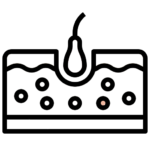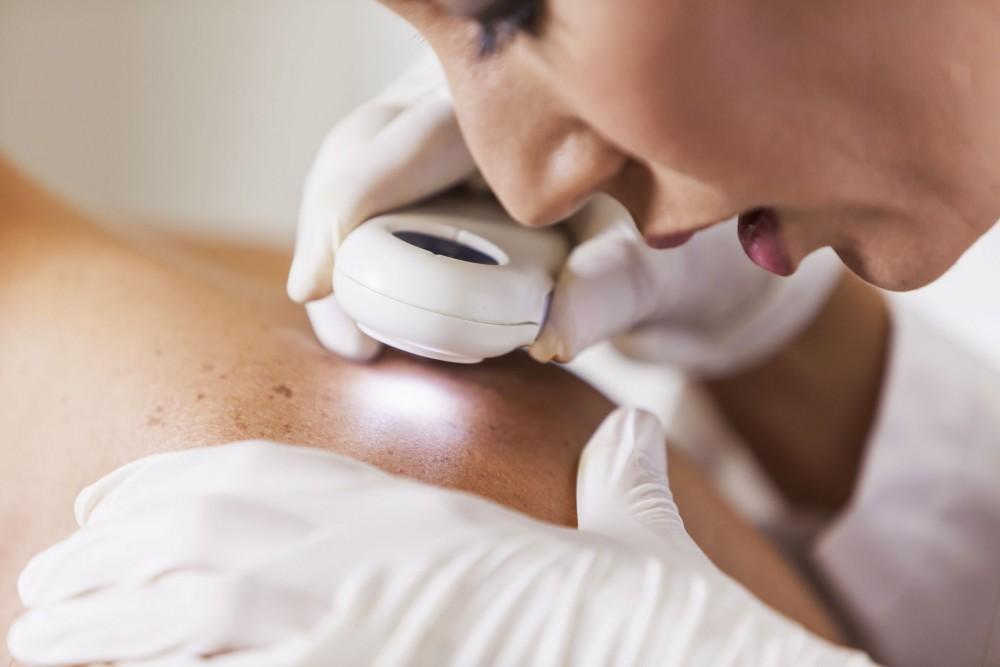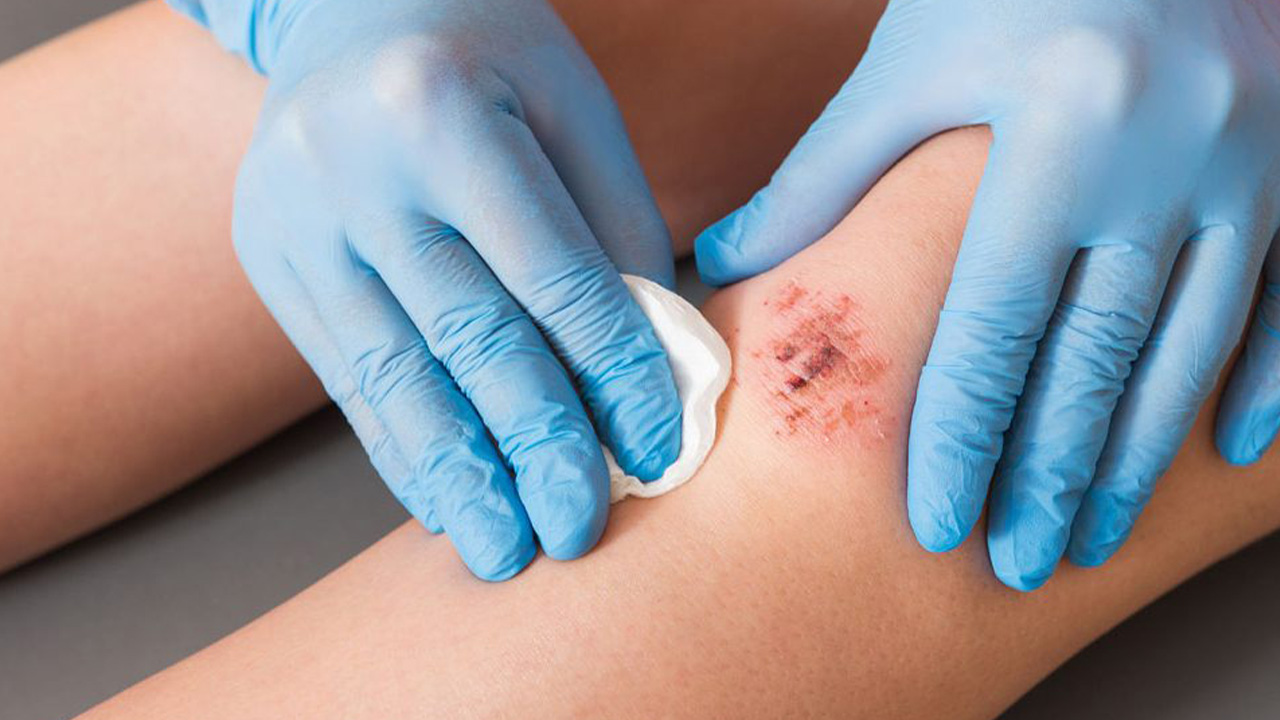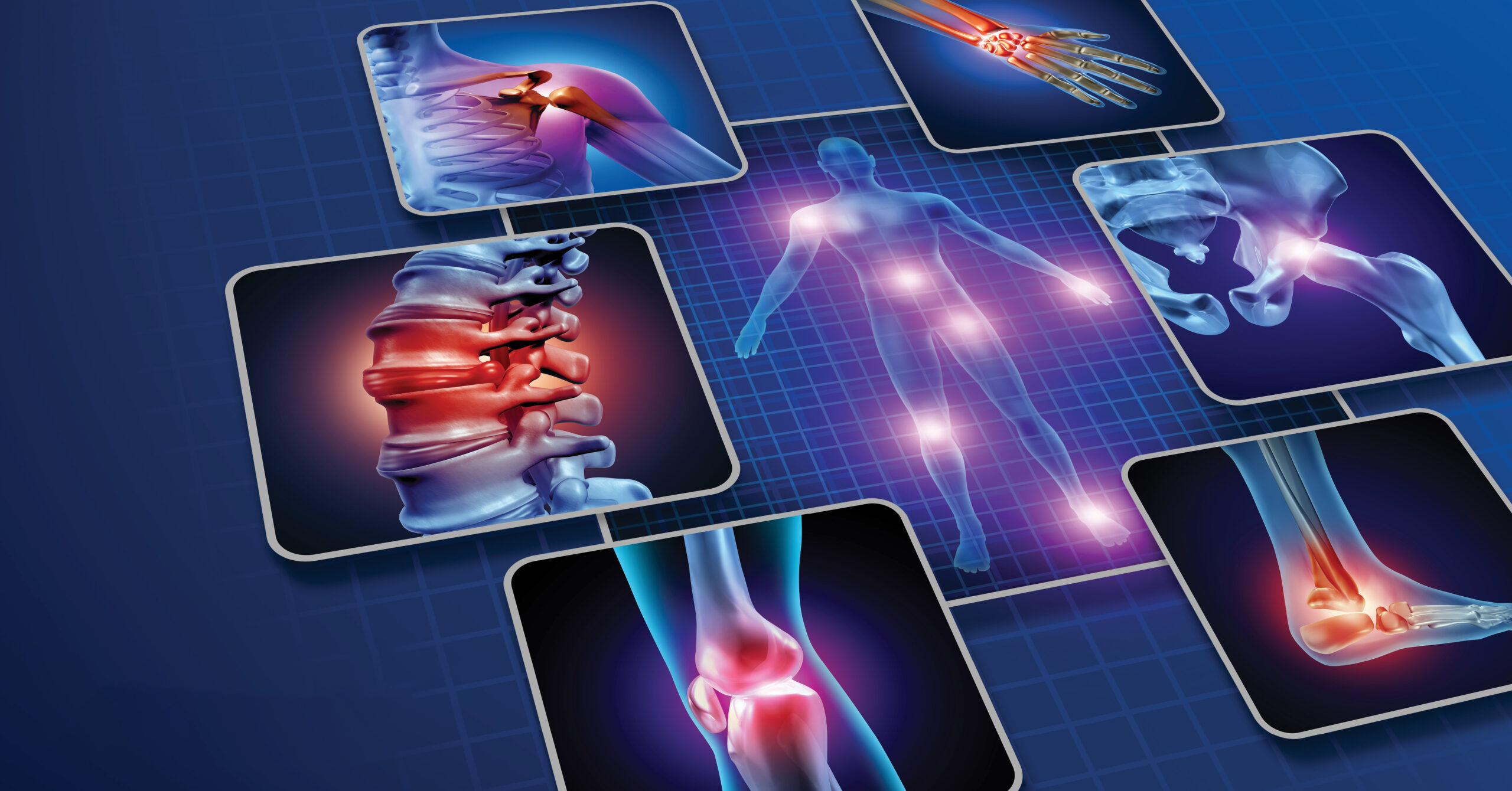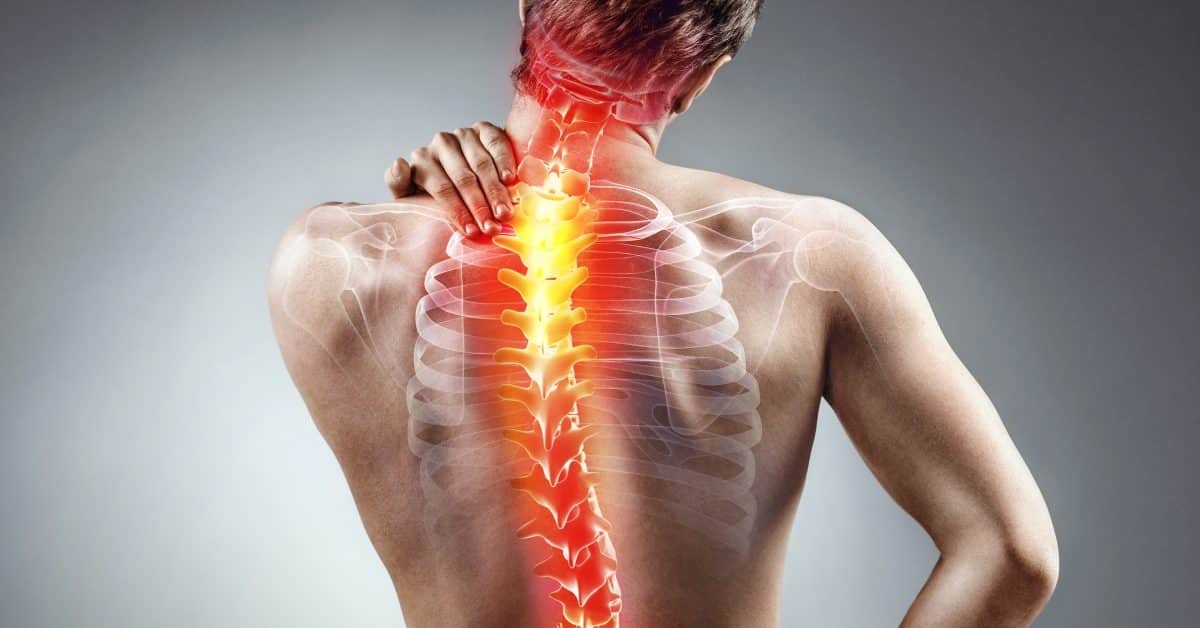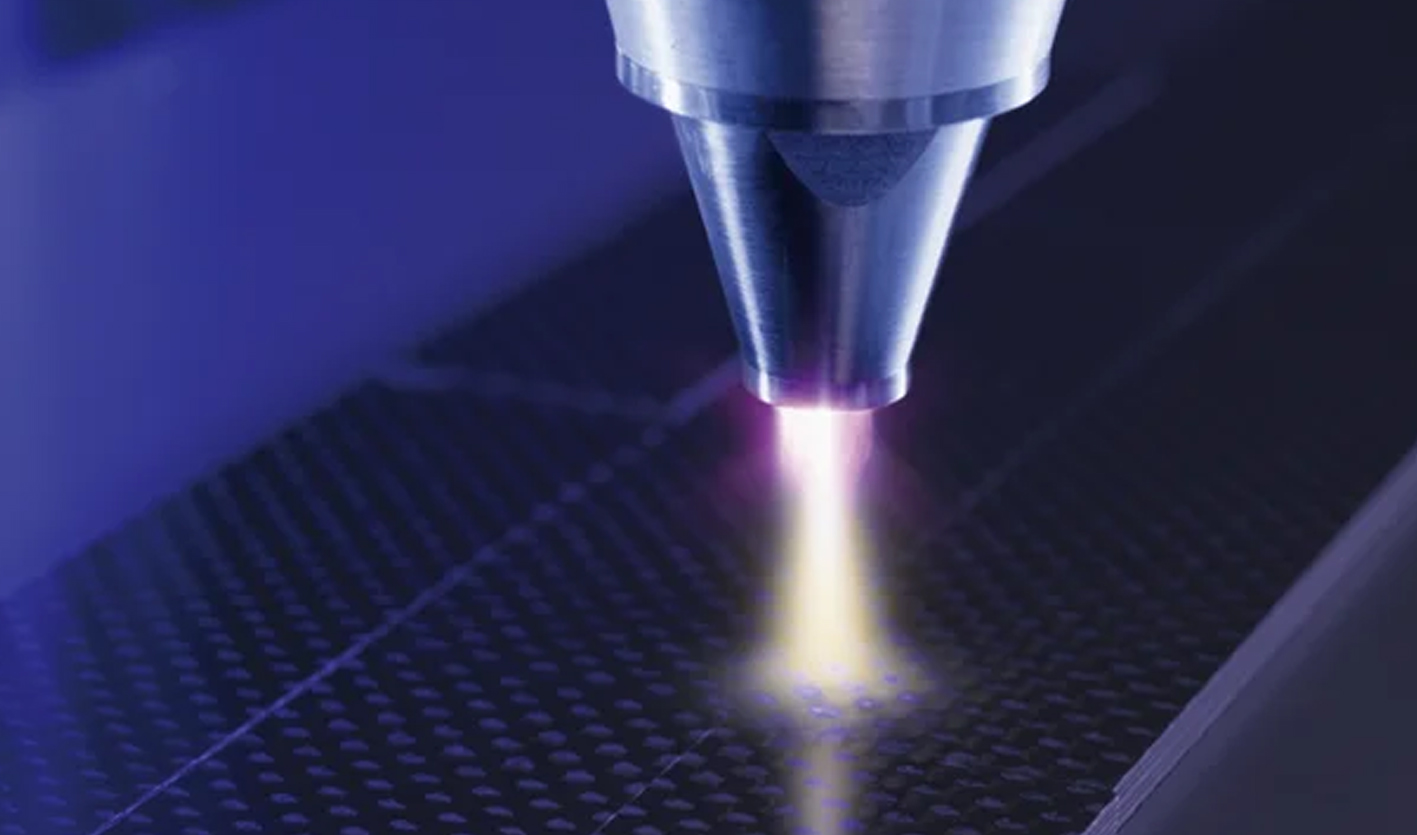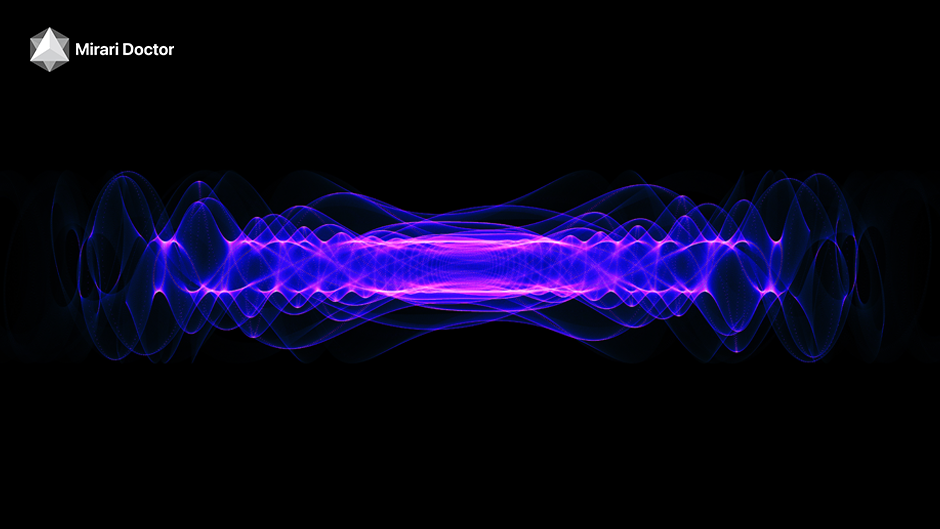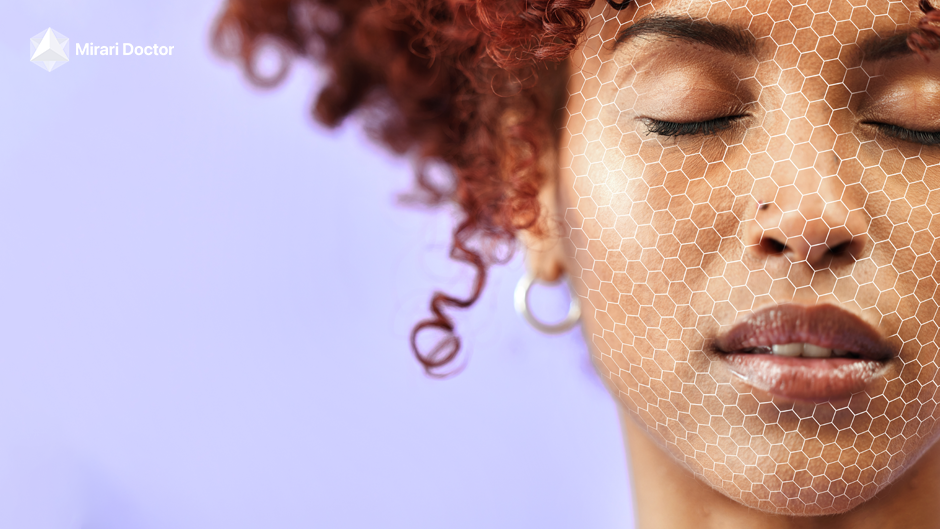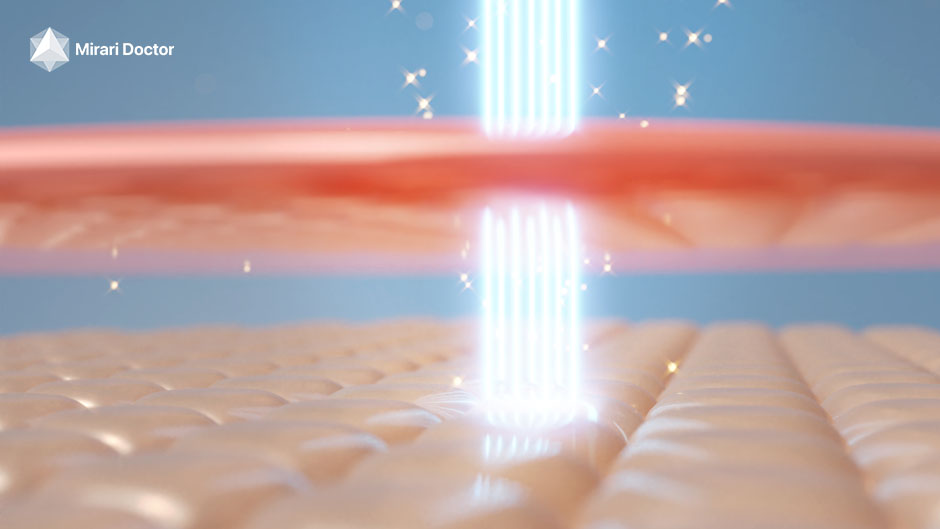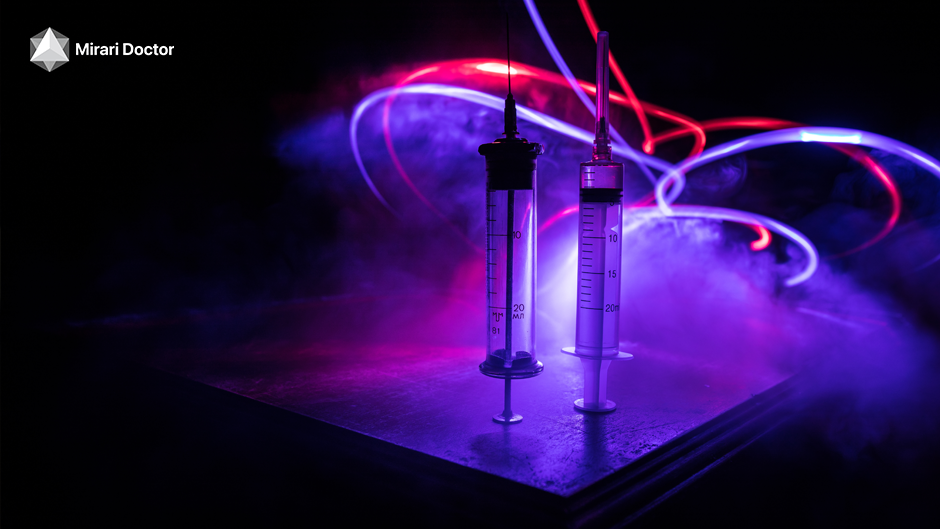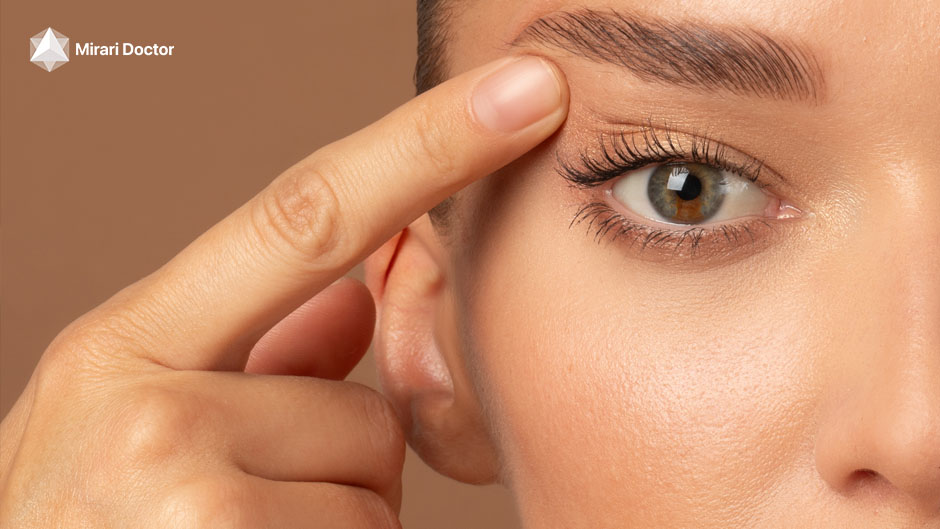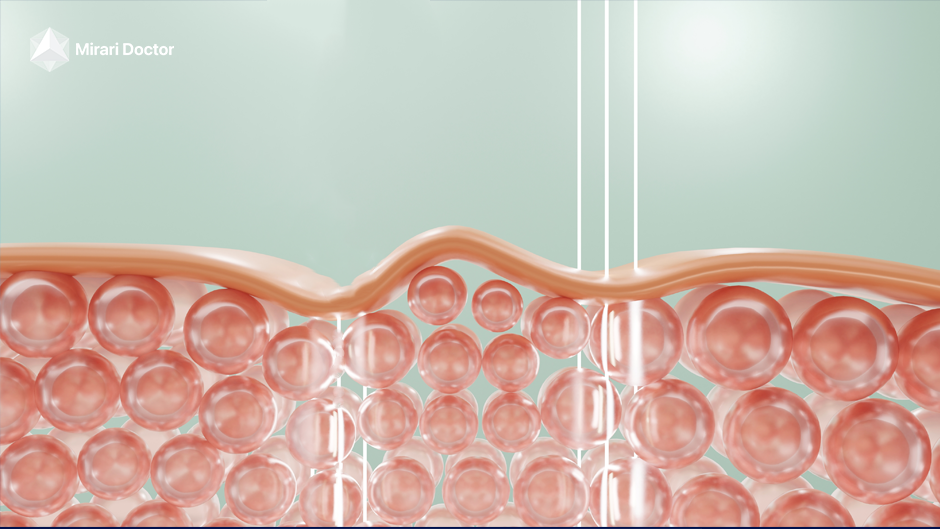
You May Be Interested In:
Cold plasma therapy has emerged as a groundbreaking approach in dermatology, particularly for facial treatments. This innovative technology offers a multitude of benefits focused on anti-aging effects, skin rejuvenation, improving skin texture and tone, and reducing acne scars. It operates through the ionization of gas, creating a blend of reactive species that stimulate various biological processes promoting healing and rejuvenation. Compared to traditional treatments, cold plasma stands out due to its non-invasive nature and minimal downtime.
One notable innovation in this field is the Mirari Cold Plasma device, developed by General Vibronics. This is the world’s first handheld device that utilizes groundbreaking technology harnessing the power of nitric oxide (NO) to create a unique form of non-invasive cold plasma. The Mirari Cold Plasma System is approved by the Thai FDA and Vietnam MOH for specific uses, opening up a range of potential applications, especially in the medical field.
This article delves into the comprehensive benefits of cold plasma for facial treatments, exploring its mechanism of action, safety, potential side effects, and comparative analysis with other dermatological treatments. We’ll also look at patient testimonials, success stories, and the future of cold plasma technology in skincare.
Benefits of cold plasma for facial treatments
Cold plasma therapy has gained significant attention in skincare, particularly for its rejuvenating effects on the face. This therapy leverages the properties of cold atmospheric plasma (CAP), known for stimulating various cellular processes beneficial to skin health.
Anti-aging effects
When it comes to fighting the signs of aging, cold plasma therapy is like discovering a fountain of youth. This technology promotes new collagen formation, essential for maintaining skin elasticity and firmness. Collagen synthesis is akin to scaffolding that supports the skin structure, reducing fine lines and wrinkles significantly by plumping the dermis from within. The result is smoother, firmer skin with a natural glow.
Clinical studies have shown that cold plasma can increase collagen production by up to 50%, enhancing the skin’s texture and appearance. This effect is particularly beneficial for those who start to notice the early signs of aging.
Moreover, cold plasma treatment doesn’t just support collagen production; it also amps up elastin levels. Increased elastin means your skin can snap back into place more readily, maintaining a more youthful contour. Regular sessions enhance skin elasticity, contributing to a tighter facial profile.
Adding to these benefits, cold plasma therapy encompasses a non-invasive approach with minimal downtime, a stark contrast to more traditional invasive procedures like facelifts or chemical peels, which require extended recovery periods. Most people can return to their normal activities immediately following a session, a key advantage for busy individuals.
The Mirari Cold Plasma device is specifically designed to deliver these anti-aging effects. Its unique nitric oxide-based cold plasma technology has shown promising results in clinical studies for rejuvenating skin and reducing signs of aging. Patient testimonials highlight the noticeable improvements in fine lines, wrinkles, and overall skin firmness achieved with regular Mirari treatments.
Skin rejuvenation
Skin rejuvenation with cold plasma therapy is like hitting the reset button on your skin. Over time, our skin is exposed to a multitude of stressors that can make it appear dull, uneven, and tired. Cold plasma therapy harnesses the power of reactive species to re-energize and refresh the skin, restoring its youthful vibrancy.
Studies indicate that cold plasma therapy significantly improves skin texture. It promotes the reconstruction of the dermal layer by enhancing the thickness and organization of collagen fibers. This process smooths out fine lines and crepey skin, giving you a more even and radiant complexion.
But the benefits don’t stop at texture alone. Cold plasma also works wonders for skin tone. It helps in addressing pigmentation issues caused by sun exposure and aging by encouraging cellular regeneration and repair. This action helps reduce the visibility of dark spots, leading to a more uniform complexion.
Besides structural and tone improvements, cold plasma has a remarkable ability to accelerate healing. Enhanced blood circulation brought about by the treatment ensures more nutrients and oxygen are delivered to the skin. This factor is crucial for repairing and rejuvenating skin cells.
Cold plasma therapy’s non-ablative technology makes it a preferred option for those hesitating to undergo laser treatments or chemical peels. By leaving the outer layer of the skin intact while effectively stimulating deeper layers, it minimizes recovery time and reduces the risk of post-treatment complications. Sessions typically last between 15 to 30 minutes, fitting conveniently into even the busiest schedules.
Case studies of patients treated with the Mirari Cold Plasma device demonstrate significant improvements in overall skin quality, including enhanced radiance, smoothness, and evenness of skin tone. The device’s targeted delivery of nitric oxide-enriched cold plasma stimulates the skin’s natural rejuvenation processes, leading to visible results with minimal downtime.
Improvement of skin texture and tone
Improving skin texture and tone with cold plasma therapy is like giving your skin a spa retreat. Over time, the skin can develop an uneven texture and tone due to various factors such as sun exposure, aging, and lifestyle choices. Cold plasma steps in to rejuvenate and harmonize the skin’s texture and tone.
Cold plasma treatment works by promoting the synthesis of dermal components, crucial for maintaining smooth and supple skin. This process addresses issues such as rough patches and fine lines, making the skin surface more even and refined.
In terms of improving skin tone, cold plasma excels by targeting pigmentation irregularities. Dark spots caused by sun damage or aging can make the skin appear blotchy and uneven. Cold plasma encourages cellular turnover and repair, significantly reducing the appearance of these dark spots and promoting a more consistent skin tone.
Additionally, this therapy supports the reduction of erythema, a condition characterized by redness of the skin. By modulating inflammatory responses and promoting healing processes in the tissue, cold plasma can help diminish redness, leading to a more balanced skin tone.
For those looking to improve their overall facial contour, cold plasma treatments can also enhance the skin’s elasticity. The increased production of collagen and elastin contributes to a more lifted and firm appearance.
Moreover, cold plasma therapy is suitable for various skin types, offering a versatile solution for individuals with different needs. The gentle nature of the treatment makes it accessible for those with sensitive skin, who may not tolerate more abrasive procedures like chemical peels or certain laser treatments.
Real-world examples from Mirari Cold Plasma device users showcase the effective improvement of skin texture and tone. Patients report smoother, more refined skin and a reduction in pigmentation irregularities after a series of treatments. The device’s advanced cold plasma technology, powered by nitric oxide, offers a gentle yet powerful solution for enhancing overall skin quality.
Reduction of acne scars
Acne scars can be a haunting reminder of past skin troubles, much like faded ink on an old manuscript. Cold plasma therapy offers new hope in rewriting this narrative, effectively reducing the appearance of these scars and improving overall skin health.
Cold plasma’s impact on acne scars is profound, mainly due to its ability to promote tissue regeneration and healing. The therapy stimulates the migration and proliferation of skin cells, essential for scar recovery. Clinical studies have demonstrated that CAP treatments can lead to noted improvements in acne scars, with some patients seeing up to a 30% reduction in their appearance.
Beyond promoting cellular regeneration, cold plasma therapy exerts powerful anti-inflammatory effects. Acne scars often come with redness and hyperpigmentation, making them more visible. Cold plasma helps to calm down this inflammation, reducing redness and evening out skin tone.
The antimicrobial properties of cold plasma also play a crucial role. By exerting bactericidal effects, CAP can help prevent future acne outbreaks by targeting and inactivating bacteria such as Cutibacterium acnes, the main culprit behind acne formation. This dual action – treating existing scars and preventing new ones – makes cold plasma a comprehensive solution for long-term skin health.
Patients appreciate the non-invasive nature of cold plasma therapy, especially when considering alternative treatments like laser resurfacing or chemical peels, which involve more extensive recovery times and potential discomfort. Cold plasma treatments are generally well-tolerated, with side effects mostly limited to temporary redness or warmth in the treated areas.
The process is straightforward, with sessions lasting around 20 to 30 minutes, making it a convenient option for those seeking effective scar treatment without significant disruption to their daily lives. Regular sessions can progressively improve skin texture and diminish the visibility of scars over time.
The Mirari Cold Plasma device has shown promise in treating acne scars. Its unique nitric oxide-based cold plasma technology penetrates deep into the skin, stimulating healing processes and collagen production. Patients have reported visible improvements in scar appearance and overall skin smoothness after a course of Mirari treatments, with minimal side effects and downtime.
How cold plasma works
The beneficial effects of cold plasma on the skin result from the ionization of gas, creating reactive species such as reactive oxygen and nitrogen species (RONS). These components interact with skin tissue to stimulate various cellular processes, promoting healing, collagen production, and overall skin health. The unique properties of cold plasma make it a versatile and effective treatment for a variety of skin conditions.
Mechanism of action
Understanding the mechanism of action of cold plasma is like unraveling the intricate dance of molecules and energy that rejuvenate the skin. Cold plasma is generated by applying an electric field to a gas, leading to its ionization. This process produces a stream of charged particles, including electrons, ions, and neutral particles, that can exert energy at a molecular level.
One of the critical functions of cold plasma is its ability to stimulate fibroblast proliferation. Fibroblasts are the architects of the skin, producing collagen and other components of the extracellular matrix, essential for maintaining skin elasticity and repair. With increased fibroblast activity, cold plasma therapy enhances collagen synthesis, making the skin stronger and more resilient.
Cold plasma also boasts notable antimicrobial properties. It disrupts the cell membranes of bacteria, viruses, and fungi, thereby aiding in skin healing and preventing infections. This effect is particularly beneficial for conditions like acne, where bacterial infection plays a significant role.
Additionally, cold plasma has anti-inflammatory effects. By modulating the immune response and promoting healing processes in the tissue, it can reduce inflammation in skin conditions such as acne and eczema.
Other components of cold plasma, such as ultraviolet (UV) photons and electromagnetic emissions, also contribute to its therapeutic effects. These components further enhance cellular signaling pathways, leading to improved skin regeneration and health. The net result is a comprehensive approach to skin rejuvenation that addresses multiple factors essential for maintaining youthful and healthy skin.
The Mirari Cold Plasma device leverages these mechanisms of action through its innovative nitric oxide-based cold plasma technology. By delivering a controlled stream of nitric oxide-enriched plasma to the skin, it stimulates the natural healing and rejuvenation processes. This targeted approach maximizes the benefits of cold plasma while minimizing potential side effects, making it a safe and effective option for facial treatments.
Types of cold plasma devices
Cold plasma treatment for the face can be delivered through various types of devices, each offering unique features and benefits.
The Mirari Cold Plasma device falls into the consumer devices category, offering a convenient and effective at-home solution for facial treatments. Its handheld design and nitric oxide-based cold plasma technology allow for targeted application and precision in addressing various skin concerns. The device’s user-friendly interface and adjustable settings make it accessible for consumers looking to incorporate cold plasma therapy into their skincare routine.
Comparison with traditional treatments
Comparing cold plasma with traditional dermatological treatments highlights the unique advantages this innovative technology brings to the table.
- Cold Plasma vs. Laser Therapy:
- Mechanism of Action: Cold plasma generates reactive species that promote healing and antimicrobial effects without significantly raising tissue temperature. In contrast, laser therapy uses focused light energy to target skin imperfections, either by removing layers of skin (ablative) or heating underlying tissues (non-ablative) to stimulate collagen production.
- Applications: Cold plasma is primarily used for wound healing, acne treatment, and improving skin texture, while laser therapy is frequently employed for skin resurfacing, hair removal, and vascular lesions.
- Efficacy and Safety: Cold plasma is generally well-tolerated with minimal side effects such as transient erythema. Laser therapy, though effective, can pose risks such as pain, swelling, and potential discoloration.
- Cold Plasma vs. Chemical Peels:
- Mechanism of Action: Cold plasma delivers ionized gas that stimulates cellular repair and regeneration, whereas chemical peels use acidic solutions to exfoliate the skin’s surface and promote new skin growth.
- Applications: Cold plasma is effective for acne, inflammation, and general skin rejuvenation, while chemical peels are commonly used for acne scars, hyperpigmentation, and improving skin texture.
- Efficacy and Safety: Cold plasma side effects are generally mild and include localized redness. Chemical peels can cause irritation, peeling, and require a recovery period based on peel depth.
- Cold Plasma vs. Microdermabrasion:
- Mechanism of Action: Cold plasma works at the cellular level promoting regeneration, whereas microdermabrasion mechanically exfoliates the top layer of the skin.
- Applications: Cold plasma treats acne, wound healing, and skin texture, while microdermabrasion is effective for surface-level skin irregularities and enhancing skin brightness.
- Efficacy and Safety: Cold plasma is less invasive with fewer side effects. Microdermabrasion is minimally invasive but can result in mild redness and sensitivity.
In comparative studies, the Mirari Cold Plasma device has shown promising results in terms of efficacy, safety, and patient satisfaction. Its nitric oxide-based cold plasma technology offers a gentle yet powerful alternative to traditional treatments, with minimal downtime and side effects. While more research is needed to fully compare the long-term outcomes, the Mirari device presents a compelling option for those seeking non-invasive facial rejuvenation.
Applications of cold plasma in dermatology
Cold atmospheric plasma (CAP) has shown promising applications in the treatment of various skin conditions, including acne, psoriasis, and eczema. This section delves into how CAP’s unique properties are harnessed to address these common dermatological issues effectively.
Acne treatment
Cold atmospheric plasma is gaining attention as a therapeutic option for acne vulgaris, a common but persistent skin ailment. CAP operates in a targeted fashion, addressing multiple factors contributing to acne with precision.
The Mirari Cold Plasma device has shown promise in treating acne. Its nitric oxide-based cold plasma technology targets the root causes of acne, including bacteria, inflammation, and excess sebum production. Clinical studies and patient testimonials highlight the device’s effectiveness in reducing acne lesions, improving skin clarity, and minimizing the risk of future breakouts.
Psoriasis and eczema management
Cold atmospheric plasma has demonstrated benefits in managing psoriasis and eczema, two chronic inflammatory skin conditions that significantly impact quality of life.
- Psoriasis Management:
- Reduction of Psoriatic Lesions: CAP reduces the thickness and scaling of psoriatic plaques by promoting keratinocyte proliferation and normalization. It helps to smooth out rough patches, leading to clearer skin.
- Modulation of Immune Responses: Psoriasis involves hyperactive immune responses. CAP modulates these responses, promoting an environment conducive to healing.
- Clinical Evidence: Studies have reported significant improvements in psoriatic lesions after CAP treatments, supporting its efficacy as a non-invasive alternative to traditional therapies.
- Eczema Management:
- Inflammatory Response Modulation: Eczema, particularly atopic dermatitis, involves inflammatory processes that CAP can modulate. By reducing cytokine production, CAP helps alleviate itching and redness.
- Improvement of Skin Barrier: Eczema often results in a compromised skin barrier. CAP improves this barrier function by altering lipid composition and enhancing hydration.
- Antimicrobial Effects: CAP’s antimicrobial properties help prevent secondary infections associated with eczema flares, providing a comprehensive treatment approach.
Case studies involving the Mirari Cold Plasma device have shown encouraging results in managing psoriasis and eczema. Patients reported a reduction in the severity and frequency of flare-ups, as well as improved skin comfort and overall quality of life. The device’s nitric oxide-enriched cold plasma helps to regulate immune responses, repair the skin barrier, and prevent secondary infections, offering a multi-faceted approach to managing these chronic conditions.
Rosacea and skin redness reduction
Rosacea is a chronic skin condition characterized by facial redness, visible blood vessels, and sometimes acne-like bumps. Reducing these symptoms with cold plasma involves modulating inflammation and promoting healing.
- Mechanism of Action:
- Reduction of Inflammation: Rosacea involves significant inflammation, and CAP’s ability to modulate inflammatory responses is key to reducing redness and swelling.
- Antimicrobial Properties: CAP can target microorganisms that exacerbate rosacea symptoms, reducing their impact on the skin.
- Promotion of Healing: By stimulating collagen production and enhancing tissue repair, CAP helps improve the integrity and appearance of rosacea-affected skin.
- Clinical Evidence:
- Efficacy Studies: Research shows that CAP treatments can significantly reduce erythema and improve skin texture in rosacea patients. Trials indicate improvements in skin appearance and a decrease in the intensity and frequency of flushing episodes.
- Safety Profile: CAP is generally well-tolerated, with minimal side effects. Most patients only experience temporary erythema or mild discomfort, which quickly resolves.
- Patient Outcomes:
- Success Stories: Numerous patient testimonials report a notable reduction in redness and an overall improvement in skin quality after CAP treatments. These stories often highlight enhanced confidence and quality of life, emphasizing the real-world benefits of cold plasma therapy.
The Mirari Cold Plasma device has shown encouraging results in managing rosacea and reducing skin redness. Its nitric oxide-based cold plasma technology helps to calm inflammation, control rosacea triggers, and promote skin healing. Patients treated with the Mirari device have reported significant improvements in redness, flushing episodes, and overall skin comfort. The device offers a gentle, non-invasive option for those seeking to manage rosacea symptoms and achieve clearer, more even-toned skin.
Safety and side effects
Cold plasma treatments, particularly in dermatology, have gained interest for their various potential applications, including skin rejuvenation, acne treatment, and wound healing. However, there are several important considerations regarding the safety, potential risks, side effects, and post-treatment care associated with these procedures.
Potential risks of cold plasma treatments
While cold plasma therapy is generally considered safe, potential risks and side effects must be acknowledged to ensure patient safety.
- Chemical Burns: One of the most serious risks associated with plasma treatments, particularly if improperly administered, is the potential for chemical burns. This can occur if the device’s energy output is too high or if it is used incorrectly, leading to damage to the skin. Hence, it’s crucial that treatments are administered by qualified and experienced practitioners who can correctly calibrate the equipment.
- Skin Reactions: Post-treatment, patients may experience various skin reactions such as redness, swelling, peeling, or scabbing. These symptoms are generally part of the natural healing process but can vary in severity depending on individual skin types and the specific protocol used.
- Long-term Skin Effects: While cold plasma is generally well-tolerated, it’s essential to monitor long-term effects on the skin. Current studies indicate that cold plasma treatments do not significantly disturb the skin barrier or reduce skin moisture, but more long-term dermatological safety evaluations are needed.
- Potential for Allergic Reactions: Although rare, some individuals may experience allergic reactions to the treatment. These reactions could range from mild itching to more severe symptoms, necessitating immediate medical attention.
The Mirari Cold Plasma device is designed with safety as a top priority. Its nitric oxide-based technology allows for controlled delivery of cold plasma, minimizing the risk of chemical burns or adverse skin reactions. The device has undergone rigorous testing and has been approved by regulatory bodies such as the Thai FDA and Vietnam MOH for specific uses. However, as with any medical device, it is important to follow the manufacturer’s guidelines and seek treatment from trained professionals to ensure optimal safety and results.
Post-treatment care
Post-treatment care is crucial in maximizing the benefits of cold plasma therapy while minimizing potential side effects.
When using the Mirari Cold Plasma device, it is crucial to follow the provided post-treatment care instructions. This may include using the recommended skincare products, avoiding sun exposure, and monitoring the skin for any unusual reactions. The device’s user manual provides detailed guidance on post-treatment care to ensure the best possible results and minimize the risk of side effects.
Factors affecting treatment safety
Several factors can influence the safety and efficacy of cold plasma treatments. By controlling these factors, practitioners can ensure optimal outcomes for patients.
- Device Quality and Calibration: The quality and proper calibration of cold plasma devices are paramount. Devices must meet stringent safety standards, and practitioners should be adequately trained to use them.
- Practitioner Experience: Experienced practitioners are more likely to achieve consistent and safe results. They possess a thorough understanding of the technology and can tailor treatments to individual patient needs.
- Patient Skin Type and Condition: Individual skin types and conditions can significantly impact treatment outcomes. Practitioners must assess each patient’s skin type to customize the procedure accordingly.
- Pre-treatment Preparation: Proper pre-treatment preparation, including skin assessments and addressing any underlying conditions, can enhance safety and efficacy.
- Post-treatment Follow-up: Regular follow-up appointments allow practitioners to monitor healing and address any complications promptly.
The Mirari Cold Plasma device is engineered to high quality standards and undergoes strict calibration processes to ensure consistent and safe performance. The device is intended for use by trained professionals who can assess individual patient needs and tailor the treatment accordingly. The Mirari team provides comprehensive training and support to practitioners to ensure they have the knowledge and skills necessary to achieve optimal results while prioritizing patient safety.
Comparative analysis
Understanding the comparative benefits and drawbacks of cold plasma versus other dermatological treatments provides a clearer picture of its unique advantages. This section delves into various comparisons to highlight where cold plasma stands out in the realm of skincare.
Cold plasma vs. laser therapy
Cold plasma and laser therapy are both advanced modalities in dermatology, but they operate differently, catering to various skin concerns.
Mechanism of Action:
- Cold Plasma: Generates reactive species (RONS) that interact with biological tissues, promoting healing and antimicrobial effects. It often utilizes argon or helium gas and achieves therapeutic benefits without significantly raising tissue temperature, hence termed “cold” plasma.
- Laser Therapy: Uses focused light energy to target skin imperfections. Depending on the type of laser (ablative or non-ablative), the mechanism may involve either removing layers of skin or heating the underlying tissue to stimulate collagen production without significantly damaging the outer layer.
Applications:
- Cold Plasma: Primarily used for wound healing, acne treatment, reducing wrinkles, and improving skin texture. Studies have shown its efficacy in accelerating wound healing and offering antimicrobial protection.
- Laser Therapy: Frequently employed for skin resurfacing, hair removal, and treating vascular lesions. It is known for addressing issues like fine lines, wrinkles, melasma, and scars.
Efficacy and Safety:
- Cold Plasma: Generally well-tolerated, with minimal side effects such as transient erythema. Studies indicate promising results in enhancing wound healing, reducing inflammation, and balancing skin microbiota.
- Laser Therapy: While effective, it can have side effects such as pain, swelling, and potential discoloration. The outcomes can vary significantly based on individual skin types and the specifics of the laser treatment protocol.
Comparative studies have shown that the Mirari Cold Plasma device can achieve similar skin rejuvenation results to certain laser treatments, with fewer side effects and less downtime. Its nitric oxide-based technology offers a gentler alternative for those seeking to improve skin texture, reduce fine lines, and achieve a more even complexion.
Cold plasma vs. chemical peels
Comparing cold plasma with chemical peels highlights their differences in approach.
Mechanism of Action:
- Cold Plasma: Involves the application of ionized gas to deliver reactive species that stimulate cellular repair and regeneration. It promotes a favorable healing environment without aggressively removing skin layers.
- Chemical Peels: Utilize chemical solutions (e.g., glycolic acid, salicylic acid) to exfoliate the skin’s surface, removing dead skin cells and promoting new growth. The depth of the peel (superficial, medium, or deep) varies based on the solution’s strength.
Applications:
- Cold Plasma: Beneficial for various skin conditions, including acne, inflammation, and overall skin rejuvenation. It is effective in promoting collagen synthesis and enhancing skin elasticity.
- Chemical Peels: Commonly used for treating acne scars, hyperpigmentation, and improving skin texture. They are effective in reducing fine lines and improving skin tone.
Efficacy and Safety:
- Cold Plasma: Users often report few side effects, mainly localized redness. Its non-invasive nature makes it a gentle option for improving skin health.
- Chemical Peels: Can result in side effects such as irritation, peeling, and redness, particularly with deeper peels. They require a recovery period depending on peel depth, and results can include more immediate skin texture improvements compared to cold plasma.
The Mirari Cold Plasma device offers a non-invasive alternative to chemical peels, with fewer side effects and less downtime. Its nitric oxide-based technology stimulates the skin’s natural rejuvenation processes, leading to gradual improvements in skin texture, tone, and overall health. While chemical peels can provide more dramatic results, the Mirari device is a gentler option for those seeking long-term skin benefits.
Cost-effectiveness of cold plasma treatments
Evaluating the cost-effectiveness of cold plasma treatments reveals significant long-term benefits.
Comparative Cost Analysis:
- Initial Costs: The initial cost of cold plasma treatments may be higher than traditional therapies. For instance, a typical session with the Mirari Cold Plasma device may range from 5,000,000VND to 9,200,000VND ($216 to $398) in Vietnam. However, the cumulative effect of cold plasma in reducing long-term skin problems can result in overall cost savings due to fewer required treatments and reduced skincare product expenses.
- Economic Assessment: Studies suggest that CAP can reduce wound healing times and decrease the need for extended care. In a healthcare setting, this translates to lower costs associated with chronic conditions.
- Health Outcomes Metrics: Improved health outcomes, such as decreased infection rates and faster resolution of symptoms, can lead to cost savings over time.
The Mirari Cold Plasma device, while initially an investment, can provide long-term cost-effectiveness by addressing the root causes of various skin conditions. By promoting healing, reducing inflammation, and stimulating collagen production, the device can help minimize the need for frequent treatments and costly skincare products. Additionally, the device’s versatility in treating multiple skin concerns can further enhance its cost-effectiveness compared to single-use treatments.
Patient testimonials and case studies
Real experiences and case studies provide compelling evidence of the effectiveness and satisfaction levels associated with cold plasma treatments for facial care.
Success stories
Patient testimonials and success stories offer invaluable insights into cold plasma treatments, painting a vivid picture of real-world outcomes.
Efficiency in Aesthetic Treatments:
- Numerous clinical trials and studies document high satisfaction rates among patients who have undergone cold plasma treatments for facial rejuvenation. Patients often report smoother skin texture, reduced wrinkles, and a rejuvenated appearance.
- Case studies highlight the profound impact of cold plasma on conditions like acne and rosacea. For example, a 35-year-old woman suffering from severe acne saw significant improvement in her skin condition after a series of cold plasma sessions, achieving clearer, healthier skin.
Before and After Results:
- Platforms like RealSelf feature detailed patient reviews and before-and-after photos that clearly illustrate the transformative effects of cold plasma treatments. These images, showcasing the reduction in fine lines, improved skin texture, and uniform skin tone, serve as visual testaments to the treatment’s efficacy.
- Success stories often emphasize the minimal downtime and quick recovery associated with cold plasma treatments. For instance, a middle-aged man seeking to reduce the appearance of wrinkles reported noticeable improvements within just a few sessions, with no significant disruption to his daily routine.
Mirari Cold Plasma device users have shared inspiring success stories, highlighting the device’s effectiveness in addressing a range of skin concerns. One user, a 42-year-old woman, reported significant improvements in her acne scars and overall skin texture after using the Mirari device for several weeks. Another user, a 56-year-old man, noted a visible reduction in fine lines and a more even skin tone following a series of Mirari treatments. These real-world experiences underscore the device’s potential to deliver meaningful results for users of various ages and skin types.
Future of cold plasma technology in skincare
The future of cold plasma technology in skincare looks promising, with ongoing innovations expected to enhance its efficacy and broaden its applications.
Innovations in cold plasma treatments
Current research and innovations are paving the way for more advanced and accessible cold plasma treatments.
- Emerging Applications and Effects:
- Advanced Research: Studies are delving deeper into the complex interactions between cold plasma components and skin cells. Researchers aim to optimize the therapeutic effects of reactive oxygen and nitrogen species, potentially unlocking new applications for cold plasma in dermatology.
- Product Formulations: Over-the-counter skincare products are beginning to incorporate cold plasma technology. These products, like masks and serums, aim to deliver the benefits of cold plasma in a user-friendly format, making this advanced treatment more accessible to the general public.
- Device Innovations:
- Portable Devices: Efforts are underway to develop portable cold plasma devices designed for home use. These user-friendly devices could bring professional-grade skincare treatments into consumers’ hands.
- Clinical Applications: Innovations are also focused on enhancing the effectiveness and versatility of clinical cold plasma devices. These advancements could lead to more tailored and efficient treatments for various skin conditions.
The Mirari Cold Plasma device represents a significant step forward in making cold plasma technology accessible for at-home use. As research progresses, the Mirari team is committed to incorporating new findings and innovations into their device to continually improve its efficacy and user experience. Future iterations of the device may include expanded treatment options, enhanced portability, and integration with other skincare technologies to provide comprehensive skin rejuvenation solutions.
Ongoing research and studies
Ongoing research into the interactions between cold plasma and skin cells holds great promise for expanding its applications and improving its efficacy.
- Clinical Studies:
- Researchers are conducting systematic reviews and clinical trials to assess the safety and effectiveness of cold plasma for various skin conditions. These studies aim to identify optimal treatment parameters, ensuring consistent and reliable results.
- Future studies are likely to explore the long-term outcomes of cold plasma treatments, shedding light on their sustained benefits and potential risks.
- Future Directions:
- Research is focused on understanding how cold plasma interacts with different skin types, optimizing treatment protocols for diverse patient populations.
- Combining cold plasma technology with other skincare modalities, such as laser treatments and stemcell therapy, could enhance its therapeutic effects, leading to comprehensive, multi-faceted skincare solutions.
The Mirari team actively collaborates with leading researchers and institutions to advance the understanding and applications of cold plasma technology in skincare. By participating in clinical studies and incorporating the latest scientific findings, Mirari aims to continuously refine its device and treatment protocols to deliver the best possible results for users. As more research is conducted, the potential for cold plasma technology to revolutionize skincare and address a wide range of skin concerns will continue to grow.
Finding a qualified practitioner
Choosing a qualified practitioner for cold plasma treatments is crucial to ensure safe and effective outcomes. Here are key factors to consider:
- Credentials and Experience:
- Verify the practitioner’s qualifications, including their training and certifications related to cold plasma technology.
- Assess their experience in performing cold plasma treatments by asking about the number of procedures conducted and their familiarity with various skin types and conditions.
- Patient Reviews and Testimonials:
- Look for feedback from former patients to gauge their satisfaction with the practitioner’s expertise and the treatment outcomes. Platforms like RealSelf can provide valuable insights through reviews and testimonials.
- Request to see before-and-after photos of previous patients treated by the practitioner to gain a visual understanding of the results achieved.
- Consultation and Communication:
- During the consultation, the practitioner should clearly explain the science behind cold plasma, the expected outcomes, potential risks, and post-treatment care recommendations.
- Effective communication and a thorough understanding of patient concerns are indicative of a practitioner’s commitment to delivering quality care.
When considering the Mirari Cold Plasma device for at-home use, it is essential to purchase the device from authorized retailers and follow the manufacturer’s guidelines for safe and effective use. While the device is designed for self-application, it is still recommended to consult with a skincare professional to determine if the device is suitable for your specific skin type and concerns. The Mirari website provides a list of certified skincare professionals who can offer guidance and support to ensure optimal results and safety when using the device.
Conclusion and recommendations
Summarizing the key findings and offering final thoughts on cold plasma treatments for facial care underscores the innovative potential and future promise of this technology.
Summary of key findings
- Efficacy: Cold plasma treatments have shown significant promise in improving skin appearance, reducing wrinkles, fine lines, pigmentation issues, and treating conditions like acne and rosacea.
- Safety Profile: The treatments are generally well-tolerated, with minimal side effects. Patients report mild, transient reactions, making it a safe option for various skin types.
- Mechanism of Action: The treatment leverages reactive species generated through ionized gas to stimulate cellular processes, promote healing, and enhance skin regeneration. This non-invasive approach allows for broad applications in dermatology.
- Cost-Effectiveness: While the initial cost may be higher, the long-term benefits, including reduced need for other treatments and improved skin health, suggest a favorable cost-effective profile.
Final thoughts on cold plasma treatments for facial care
Cold plasma technology represents a significant advancement in skincare, providing an effective, non-invasive solution for a variety of dermatological issues. Its ability to stimulate collagen production, address pigmentation issues, and improve overall skin texture and tone positions it as a valuable tool in aesthetic dermatology.
Continued research and innovation will likely expand its applications, refine treatment protocols, and enhance accessibility, solidifying cold plasma’s place in modern skincare. For individuals seeking safe, effective, and minimally invasive facial treatments, cold plasma therapy offers a compelling option that combines science and beauty in a revitalizing dance of rejuvenation and renewal.
As technology advances and more clinical data becomes available, it’s essential for patients to seek qualified practitioners, adhere to recommended post-treatment care, and remain informed about emerging trends and findings in cold plasma treatments to achieve the best possible outcomes.
The Mirari Cold Plasma device brings the power of this innovative technology into the homes of consumers, offering a convenient and effective solution for facial rejuvenation. By harnessing the unique properties of nitric oxide-based cold plasma, the device delivers targeted treatments that stimulate the skin’s natural healing and regenerative processes. As the first handheld cold plasma device approved by regulatory bodies in Thailand and Vietnam, the Mirari device sets a new standard in at-home skincare, providing users with a safe, non-invasive, and science-backed approach to achieving healthier, more radiant skin.
For those seeking to experience the benefits of cold plasma technology for facial care, the Mirari Cold Plasma device presents a compelling option. With its ease of use, proven efficacy, and commitment to ongoing research and innovation, the Mirari device is poised to revolutionize the way we approach skincare, empowering users to achieve their best skin yet. To learn more about this groundbreaking technology and how it can transform your skincare routine, visit miraridoctor.com today.
Related articles
Made in USA
















